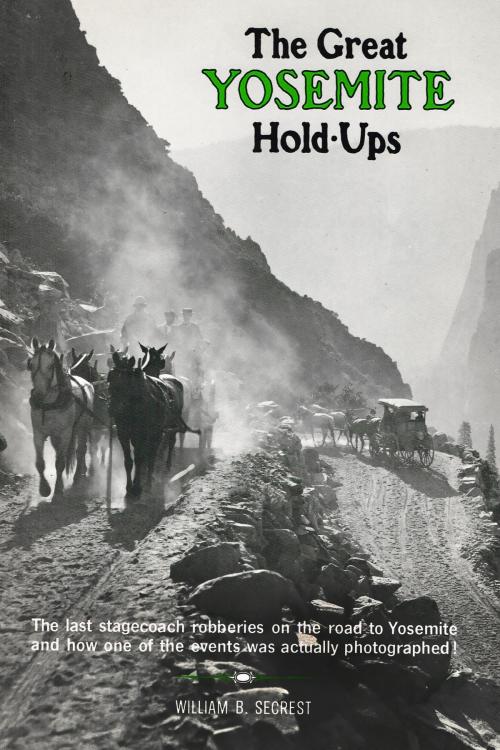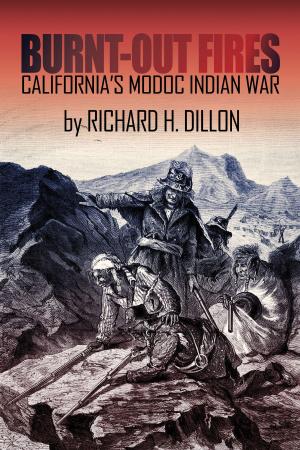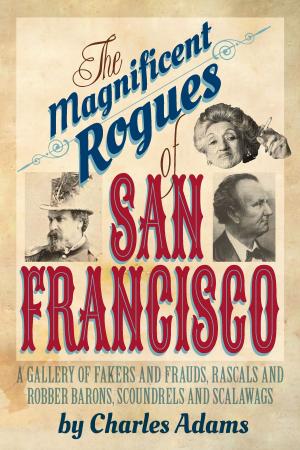The Great Yosemite Holdups
The Last Stagecoach Robberies on the Road to Yosemite and How One of the Events Was Actually Photographed!
Nonfiction, History, Americas, North America, United States, State & Local| Author: | William B. Secrest | ISBN: | 9781618090713 |
| Publisher: | The Write Thought | Publication: | July 19, 2012 |
| Imprint: | Language: | English |
| Author: | William B. Secrest |
| ISBN: | 9781618090713 |
| Publisher: | The Write Thought |
| Publication: | July 19, 2012 |
| Imprint: | |
| Language: | English |
The robberies on the road to Yosemite during the early 1900s were unique for several reasons. Despite the lack of money involved, the number of coaches and passengers robbed at one time, coupled with the fact that the bandits were never apprehended, were reason enough to be remembered.
Even more important, however, was the fact that one of the holdups was actually photographed. This singular event was perhaps a fitting finale to an era and an occupation that was rapidly passing into history.
Stagecoaching was indeed a rough, dirty and sometimes dangerous business, but it was a principal means of travel for a great many years and an accepted fact of life until the advent of the automobile. Even then it survived for some years into the 20th century.
Although improvements in ships and railroads were constantly being made, the stagecoach was a mode of travel that stood still in history. There was little difference in the stage travel of the 1850s and the turn of the century for example. The stagecoach utilized by the forty-niners was essentially the same vehicle used fifty years later and, except for some improvement in the roads and facilities, a trip to California’s famed Yosemite National Park was as arduous in 1900 as it had been in the 1870s.
But the rough trip in a stage wasn’t the only danger in a journey to the Yosemite Valley. By 1900, both stagecoaching and stage robbery were rapidly disappearing phases of western life, yet the two arts were inseparable almost to the end.
The old west died a slow and lingering death as civilization and progress fanned out over the western country. In California, however, the stagecoach era saw in its declining years a series of events that for sheer audacity had few equals, even in comparison with the days of the Gold Rush.
For boldness and daring, comedy relief and human drama, the great Yosemite holdups were unique in the annals of a fast disappearing frontier.
The robberies on the road to Yosemite during the early 1900s were unique for several reasons. Despite the lack of money involved, the number of coaches and passengers robbed at one time, coupled with the fact that the bandits were never apprehended, were reason enough to be remembered.
Even more important, however, was the fact that one of the holdups was actually photographed. This singular event was perhaps a fitting finale to an era and an occupation that was rapidly passing into history.
Stagecoaching was indeed a rough, dirty and sometimes dangerous business, but it was a principal means of travel for a great many years and an accepted fact of life until the advent of the automobile. Even then it survived for some years into the 20th century.
Although improvements in ships and railroads were constantly being made, the stagecoach was a mode of travel that stood still in history. There was little difference in the stage travel of the 1850s and the turn of the century for example. The stagecoach utilized by the forty-niners was essentially the same vehicle used fifty years later and, except for some improvement in the roads and facilities, a trip to California’s famed Yosemite National Park was as arduous in 1900 as it had been in the 1870s.
But the rough trip in a stage wasn’t the only danger in a journey to the Yosemite Valley. By 1900, both stagecoaching and stage robbery were rapidly disappearing phases of western life, yet the two arts were inseparable almost to the end.
The old west died a slow and lingering death as civilization and progress fanned out over the western country. In California, however, the stagecoach era saw in its declining years a series of events that for sheer audacity had few equals, even in comparison with the days of the Gold Rush.
For boldness and daring, comedy relief and human drama, the great Yosemite holdups were unique in the annals of a fast disappearing frontier.















